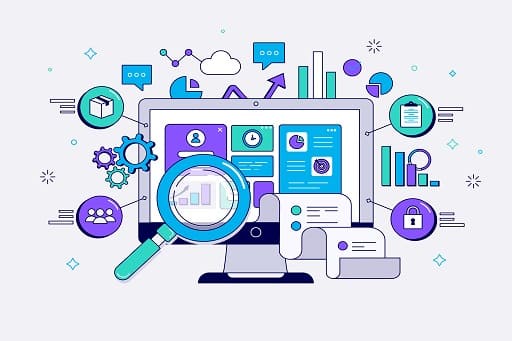We all know how important data is to making decisions, but it's easy to forget that data can be just as useful when it comes to human resource management. That's why HR analytics is such a powerful tool—it can help you leverage the same insights that drive your business to make smarter, more informed decisions in the way you manage your employees. Here are 8 ways HR analytics can transform your organization.
1. Knowing where you are going with data-driven goals
Many organizations struggle with setting goals because they don't have good data to back them up. With HR analytics, you can use data-driven insights to set more realistic and achievable goals for your organization. For example, if you know how many employees have quit in the past year, you can set a goal to reduce turnover by a certain percentage or improve employee retention by focusing on specific areas of recruitment and training. You'll be able to see tangible results from these goals thanks to the data-driven approach to setting them.
2. To measure what is most important
HR analyzes give you an opportunity to measure what really matters in an organization – the staff. By using metrics such as employee engagement, performance ratings and job satisfaction surveys, you can gain a better understanding of how well your team is performing and what areas need improvement. This makes it easier for managers to identify where other employees excel and where they may need a little extra help or training.
3. Analyze trends for staff recruitment and retention
An important part of any successful business strategy is finding the right employees and keeping them for the long term. With HR analytics, employers can analyze recruitment trends over time to identify which sources are performing best and which need improvement. They can also monitor employee retention so they can identify areas that may need more attention or resources to retain the best employees who have been with the company for a while, but may be considering leaving due to a lack of support or other factors.
4. Improve performance appraisals and promotions
But without proper tracking and analysis, it's impossible to gain insight into how these assessments impact the overall performance of teams or departments. By using analytics tools like dashboard reporting or heat maps, employers can easily see where each employee stands compared to others when it comes to performance appraisals and promotions so they can make better decisions about who should receive rewards or praise for their work in the company.
5. Create more flexible workplaces
Today's workers want flexibility – from telecommuting options to flexible working hours. Modern workers want more freedom when it comes to work-life balance. Thankfully, thanks to HR analytics, employers now have access to information about work patterns and preferences that allow them to create policies that address individual needs—not just the company's. This could, for example, involve adapting to different shift patterns due to differences in time zones, creating flexible holiday rules, offering opportunities for remote work, etc. All of these changes enable companies to stay competitive by creating engaged employees who feel valued.
6. Increase diversity and integration
Diversity and inclusion have become increasingly important in today's workplaces. A diverse workplace – whether gender, ethnic or cultural – often leads to improved innovation and productivity. However, gathering accurate information about diversity and inclusion initiatives isn't always easy—until now. With the help of HR analytics tools, organizations now have visibility into the demographics of the current workforce while tracking progress toward achieving diversity goals over time. In addition, these tools also provide valuable insight into potential areas that recruitment efforts should focus on to ensure that companies maintain a good level of diversity and inclusion in future recruitment.
7. Improve your recruitment processes
It's no secret that recruiting talented employees is one of the most difficult aspects of running a successful business – but thankfully, HR analytics give employers unprecedented insight into this process, helping them to further streamline recruitment processes. For example, these insights help determine the best channels to attract new employees and the most effective interview techniques to sort out the best candidates from the rest. In addition, HR analytics tools also help identify common characteristics of successful recruits, making it possible to create an ideal job profile and improve the chances of attracting the right type of future colleagues.
8. Monitor employee engagement and satisfaction
Last but not least, HR analytics tools enable organizations to monitor employee engagement and satisfaction both individually and collectively – making it possible to take the necessary steps to resolve any issues that arise at both ends. These tools provide insight into which aspects the office environment contributes to, both positively and negatively.
Conclusion: Although HR analytics may seem unnecessary to some, its importance should not be underestimated – especially given the potential benefits described above. From analyzing recruitment trends and improving performance appraisals to creating flexible workplaces and increasing diversity, HR analytics can offer something to improve the organization in any company.
Originally published at: https://nyckeltal.se/sb/8-vagar-timmarsanalyser-forandringsorganisation/


No comments yet